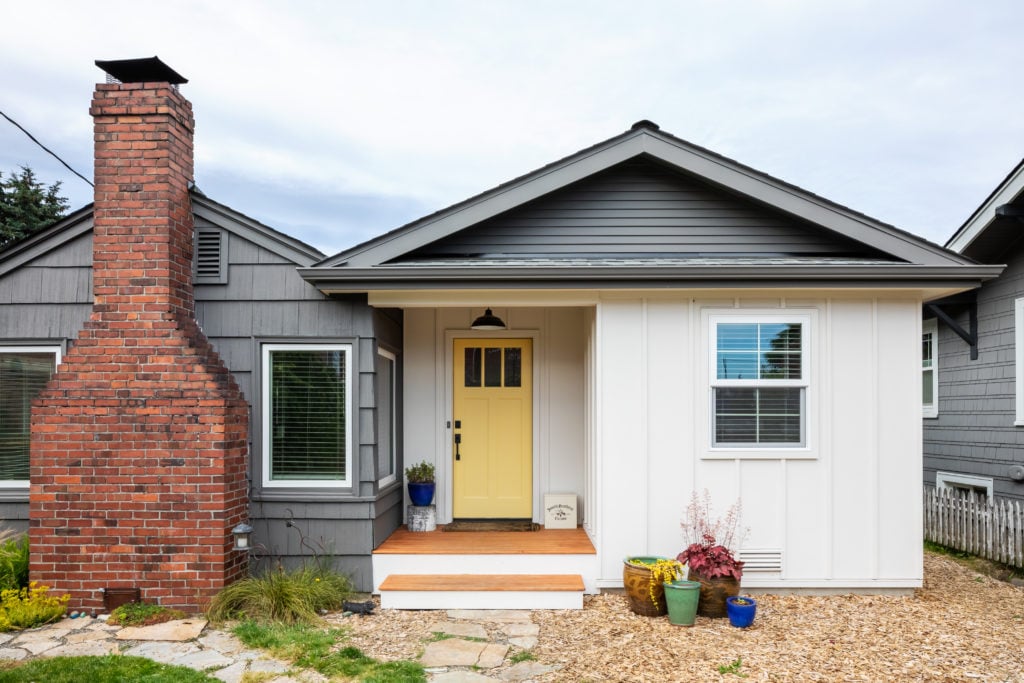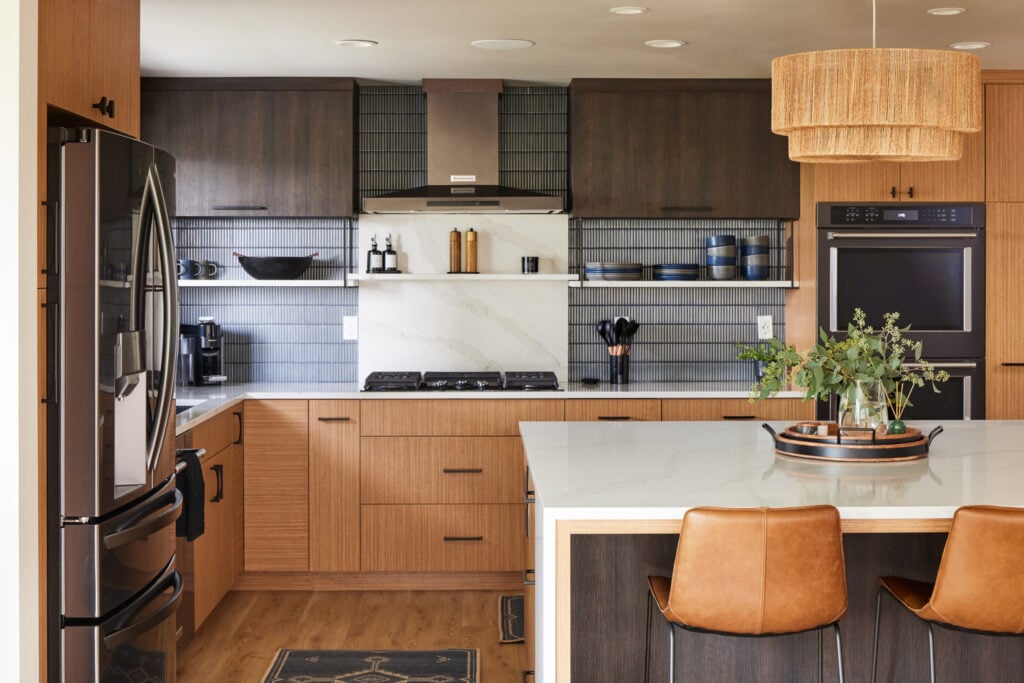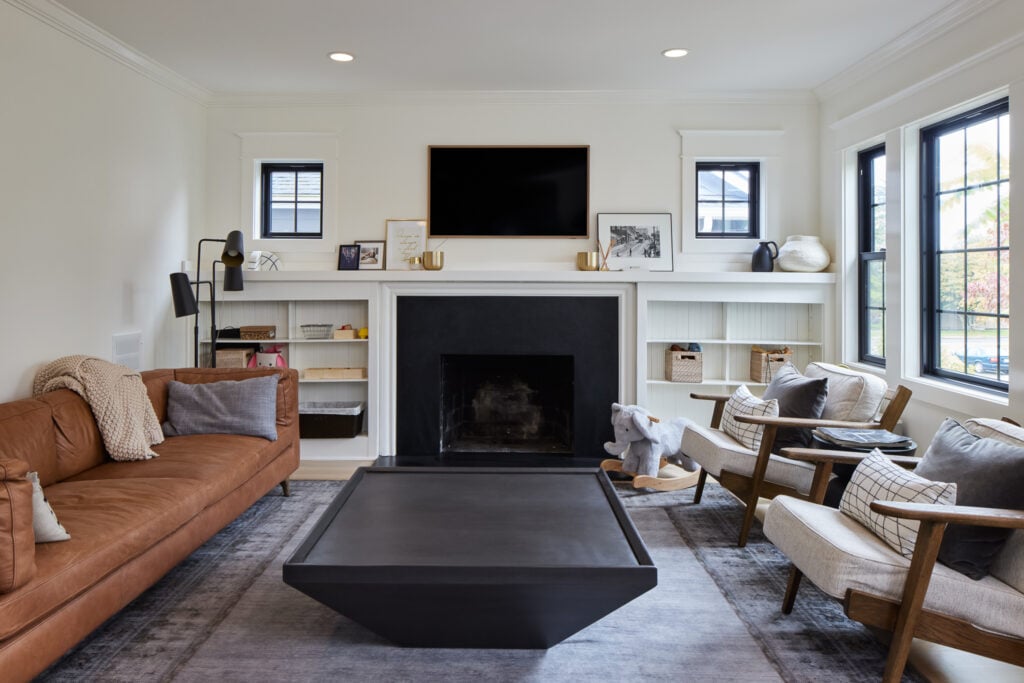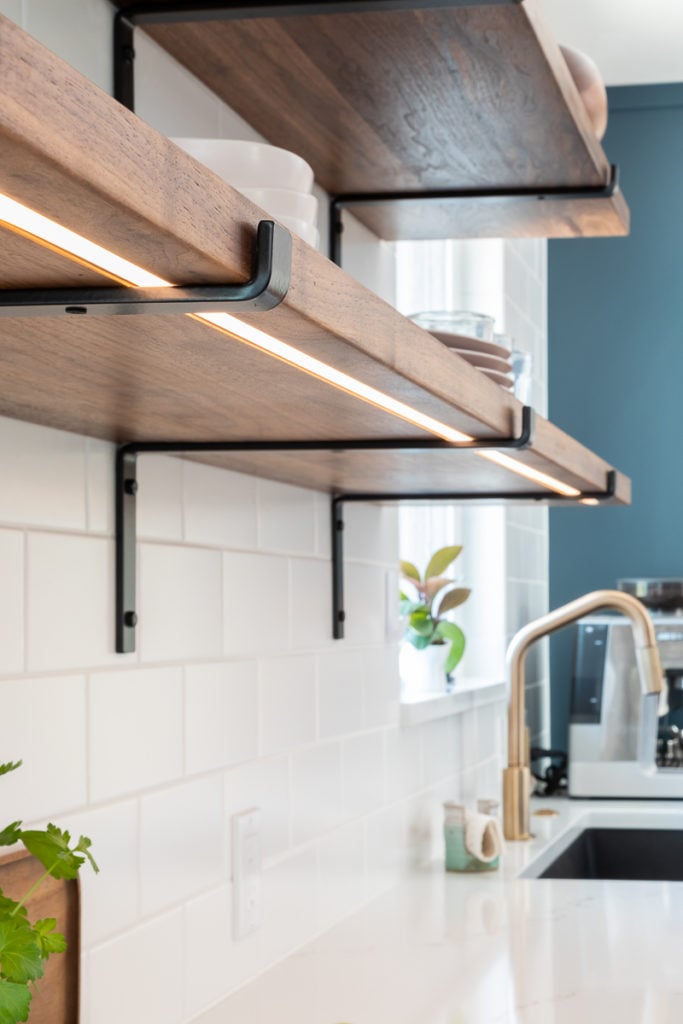Moving into a new home can be an adrenaline rush as you admire your surroundings and visualize where everything should go. Once you’re all settled in, it can be difficult to ignore the temptation to replace those “not so smart” appliances, install new flooring, or start planning a major home remodeling project. However, this overwhelming urge to make everything perfect can actually be detrimental to your long-term home goals. Read on to learn why it’s usually best to take a self-imposed remodeling hiatus after buying a new house.
As a remodeling contractor, we suggest waiting at least six months after buying a new home before starting a serious remodeling project.
Living in the House Might Change Your Mind
After a new home purchase, it’s normal to immediately start imagining ways to update your new space. However, you’ll base these ideas on how well the home’s current condition supports your lifestyle and taste. But until you’ve spent time living there, deciding which features need to be renovated will be based mainly on impulse rather than prioritizing projects that will benefit your household the most. Waiting 6 months after a home purchase before remodeling can increase the functionality and long-term satisfaction of your remodel.
Take this common example: you just bought a house with a dated kitchen. It’s not your style. You know an immediate remodel will certainly improve the look of the space, but what about everything else? Jumping into a remodel too fast may cause you to miss important functionality changes. After living in the house for a few months, you may come to realize you wish there was more counter space or the dishwasher would work better on the other side of the sink. Or maybe you realize the main floor is still too compartmentalized and you’d like to be able to see the kids in the living room while you’re cooking dinner. Tearing down one wall for open concept kitchen would really help. If you jump into a remodel right away, you’re more likely to simply replace the current layout with new cabinets and appliances, but pay less attention to functionality that could significantly increase your home happiness later.
It’s also possible that after living in the home for a few months you realize a completely different project should take priority. Maybe you thought the kids’ bath would work, but it turns out you need a larger tub. Or maybe you realize you need a more secluded home office, and a basement remodel would be most beneficial remodeling project right now.
Getting familiar with your house on a day-to-day basis, for at least 4-6 months, will help you make a better-informed decisions with your hard-earned money. Giving your mind time to cool down after a move can help you approach remodeling as a financial investment or personal investment, depending on what matters most to you.
If after 6 months you still feel the kitchen needs a facelift, we can almost guarantee you’ll plan a more valuable kitchen remodel.

Home Improvement Project Planning Takes Time
Regardless of its size or scope, to be successful, any home renovation project requires meticulous planning. That usually means meeting with several contractors, designers, and/or architects to find the ones you’d like to work with. Then, you’ll begin to explore the many design possibilities. Even if you choose to DIY, you’ll need time to find inspiration, purchase everything needed and learn the skills necessary to do good work.
For any full-room or larger remodel, hiring a reputable remodeling contractor may expose you to time and money-saving home improvement ideas that you otherwise would have overlooked like innovative kitchen storage solutions or air sealing your home properly. They’ll also likely bring new design ideas to the table that you wouldn’t have thought of on your own.
If you feel compelled to start a remodeling project right away because you want to avoid living in the house while work is being done, consider that most remodeling contractors will ask that you move-out anyway if you’re doing a major remodel such as a kitchen, multiple bathrooms or an entire floor. Moving out during a remodel is beneficial for many reasons, most importantly the safety of you and your family.
Most remodels also experience some sort of delay during construction. Moving walls, plumbing and electrical can expose unexpected problems that will take extra time to remedy. Feeling pressured to move-in, because you don’t want to pay rent and a mortgage simultaneously, can lead to bad decision making. It’s best to move in, save up so you can comfortably afford a rental during the remodel, and know you have the funds to cover any contingencies that arise.
You Deserve Some “R&R” After Buying a Home
Buying a home is one of the most important decisions you can make. It’s a life-changing experience that takes a physical and emotional toll on your body. It can involve months and months of searching as you secure financing, look at potential homes, pack your belongings, clean your old residence, and prepare for closing. Then comes the moving day itself.
Because buying a new home is often so stressful, home improvement experts recommend that you take a break before making another major life decision, like planning a home remodel. A remodel takes a lot of effort and time. It’s possibly more demanding than finding a home in the first place. From meeting with contractors, to planning the interior design, to permitting, to making decisions during construction… it’s a process. Giving your mind some time to settle down is healthy and often necessary for good decision-making.

How Long Should You Wait?
In addition to giving your emotions a chance to recalibrate, going through a cooling-off period after paying a sizable down payment will allow you to get back on your feet again financially before investing in a large home remodeling project.
What’s the ideal amount of time to wait? For most homeowners, a self-imposed waiting period of at least 4-6 months typically leads to better home improvement outcomes. It takes a few months just to settle into your new space, and then a few more months to really take note of your space and the things you’d like to change. A smaller project, like a bathroom remodel may only take a few months to ponder, but a large project like a kitchen remodel or home addition could take many months to carefully consider and another six months to plan and permit before construction starts.
It’s true what they say: luck is what happens when preparation meets opportunity. Giving yourself time between home buying and remodeling will give you time to prepare and lead to better outcomes.
Finding a Home Remodeling Contractor
Once you’ve had time to settle into your new place, finding the best contractor for your home remodeling project is essential. Whether you want a custom kitchen makeover, bathroom update, basement remodel, or something else, be sure to find a contractor that specializes in the services you’re looking for. Do your research, ask for references, get written estimates, and check online for reviews.
When you’ve got a good grasp on your project and are ready to start drafting plans, the Model Remodel team looks forward to working with you. Our design-build process will guide you through your remodel in a step-by-step, understandable way. To get started bringing your next home improvement project to life, contact our team online!






